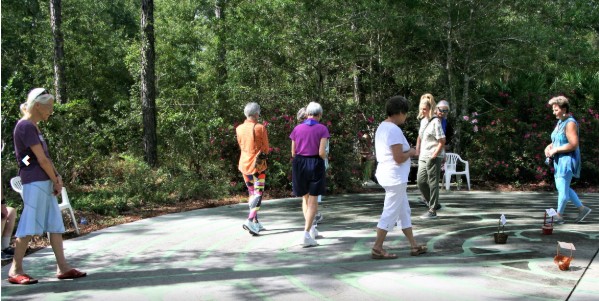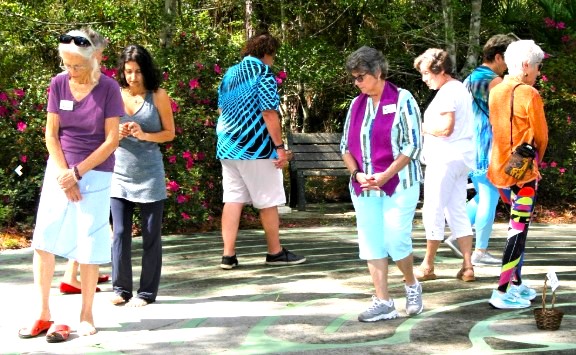A Brief History of Labyrinths
A labyrinth is not a maze, it is not meant to confuse or frustrate you. The labyrinth is one of the oldest contemplative tools known to humankind, used for centuries for personal and spiritual growth. This ancient design has been found as far back as 3000 years in a variety of forms and cultures. Some of the cultures where labyrinths have been found are ancient Crete, France, Hopi Native Americans, Norway, India, and the British Isles. The MCC labyrinth is a replication of The Chartres Labyrinth, an eleven circuit Labyrinth which was built early in the 13th century on the stone floor of Chartres Cathedral in France. Medieval Christians would visit the Chartres labyrinth and walk the labyrinth to either be connected with family members who were on Crusades to the Holy Lands or to walk the labyrinth instead of taking a pilgrimage to the Holy Lands. Today, we find that walking a labyrinth addresses many psycho-spiritual areas of the human condition. The path is helpful in awakening our spirituality, simplicity in our hectic lives, integration of mind, body, spirit and promotes self-reflection and a connection with our community. (West) This concept has created an awakening and a tremendous resurgence of people utilizing the labyrinth as a spiritual tool to connect the mind-body-spirit and promote health and wellness around the world.
Some of the Benefits of Walking a Labyrinth:
1. Beneficial in reducing stress.
2. Helps quiet the mind.
3. Opens the heart.
4. Promotes the interaction of the mind, body and spirit.
5. Fosters creativity.
6. It is a walking meditation.
7. Promotes Wellness.
8. Increases self-awareness.
9. Spiritual Growth.
10. Labyrinths are a right and left brained activity.



